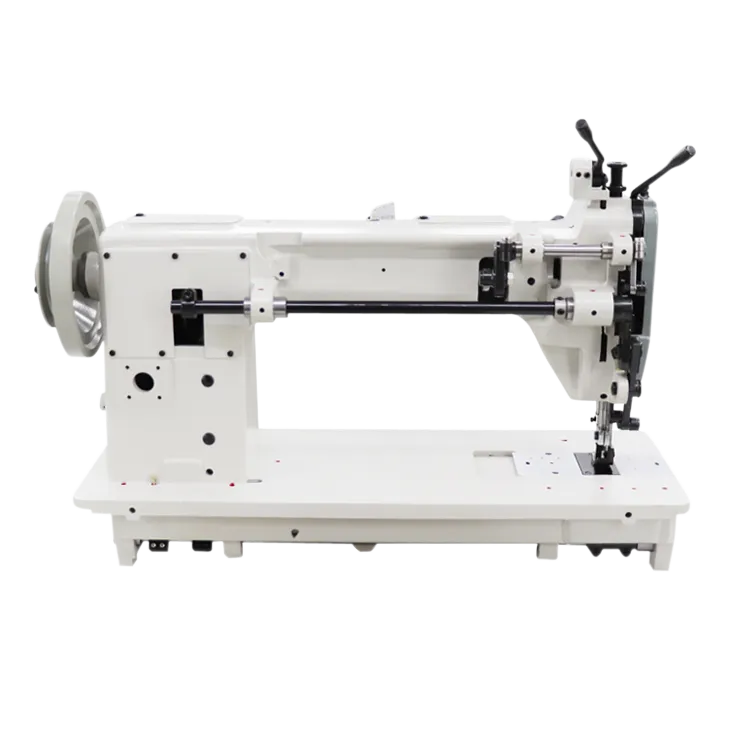Exploring the Differences Between Chain Stitch and Lock Stitch Sewing Techniques for Enhanced Craftsmanship
Understanding Chain Stitch and Lock Stitch A Comprehensive Guide
In the world of sewing and embroidery, two fundamental stitching techniques often take center stage the chain stitch and the lock stitch. Each technique has its unique characteristics, applications, and advantages, making them essential knowledge for both amateur and professional sewers.
Chain Stitch An Overview
The chain stitch is characterized by its looped appearance, resembling a series of interconnected loops. This stitch is created by forming a loop with the sewing thread and securing it with a needle, resulting in a flexible and decorative seam. One of the standout features of chain stitching is its elasticity, which makes it particularly well-suited for fabrics that require stretch, such as knits and jerseys.
Historically, the chain stitch has been used in various cultures for ornamental purposes, adding intricate designs to garments and textiles. Its versatility extends beyond just decorative uses; it is also employed in functional applications, such as in quilting and hemming. For those interested in machine sewing, many modern sewing machines come equipped with a chain stitch option, allowing for quick and efficient creation of this stitch.
Lock Stitch An Overview
In contrast to the chain stitch, the lock stitch is created by interlocking two threads—one from the needle and the other from the bobbin. This results in a firm and secure seam that is typically less elastic than that of a chain stitch. Lock stitches are commonly used in standard sewing machines and are the go-to choice for most garment construction due to their durability.
The lock stitch is easily recognizable by its straight and uniform appearance on the fabric's surface. This characteristic makes it an ideal choice for a variety of sewing projects, including fashion design, home décor, and quilting. Lock stitches hold up well under tension and provide a strong finish, making them suitable for products that require longevity and reliability, like jeans and outerwear.
chain stitch and lock stitch

Comparing the Two Advantages and Disadvantages
Both chain stitches and lock stitches come with their distinct benefits and limitations.
Advantages of Chain Stitch 1. Flexibility The stretchiness of chain stitches allows them to move with the fabric, making them excellent for knitwear. 2. Speed Chain stitching can be more efficient for certain projects, enabling quicker sewing without compromising aesthetics. 3. Decorative Appeal This stitch provides a unique visual appeal, often used in embroidery to create beautiful patterns.
Disadvantages of Chain Stitch 1. Durability While adequate for many applications, chain stitches may not be as strong as lock stitches in high-stress areas. 2. Unraveling If a single loop breaks, it can cause the entire seam to unravel, a concern for items expected to endure wear and tear.
Advantages of Lock Stitch 1. Strength The lock stitch is known for its strong holds, making it suitable for high-stress seams. 2. Compatibility Most commercial sewing machines are designed for lock stitches, making them widely accessible and easy to use. 3. Consistent Quality Lock stitches maintain a uniform appearance, leading to professional finishes on garments.
Disadvantages of Lock Stitch 1. Limited Stretch The rigidity of lock stitches can be a disadvantage for fabrics needing flexibility. 2. Time-Consuming The creation of lock stitches may take longer compared to chain stitches, especially for lengthy seams.
Conclusion
In conclusion, understanding the differences between chain stitches and lock stitches is essential for anyone venturing into sewing or embroidery. Each technique has its own set of strengths and potential drawbacks, making them suited to different types of projects. By mastering both stitches, artisans can expand their creative horizons and enhance the quality and functionality of their sewing endeavors. Whether crafting a stretchy garment or a sturdy bag, knowing when to use chain stitches or lock stitches can make all the difference.
-
Leather Sewing Machine: The Industrial Standard for Tough MaterialsNewsJul.18,2025
-
Sail Making Machine: Heavy-Duty Stitching for Industrial and Marine NeedsNewsJul.18,2025
-
Sling Sewing Machine: The Backbone of Heavy-Duty FabricationNewsJul.18,2025
-
Leather Sewing Machine: Precision for Heavy-Duty StitchingNewsJul.18,2025
-
Big Bag Sewing Machine: Powering the Future of Bulk PackagingNewsJul.18,2025
-
FIBC Sewing Machine: Essential Equipment for Bulk Bag ProductionNewsJul.18,2025
-
Heavy Duty Leather Sewing Machine: A Must-Have for Professional LeatherworkNewsMay.28,2025





























